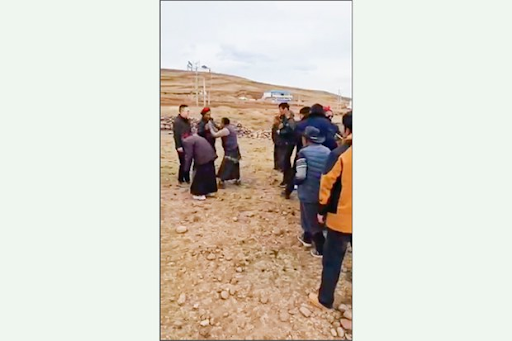Since May, a fresh outbreak of coronavirus cases has put the southern Chinese province of Guangdong on alert, with officials announcing hundreds of cases but citizens suspecting many more.
The outbreak has brought Chinese-made COVID-19 vaccines under greater scrutiny as many areas of Guangdong had earlier been innoculated. The continuing outbreak also coincides with a rise in infections in countries where Chinese vaccines are in widespread use.
Between May 21 and June 8, 110 infections were officially reported in Guangdong, which is one of China’s largest manufacturing hubs and the biggest province in terms of economic output. Locals have disputed this; a June 3, a doctor in Guangzhou, the provincial capital, said that the cities of Guangzhou and Foshan were seeing at least 200 confirmed cases a day, indicating an actual number of cases in the thousands or more.
The Chinese Communist Party (CCP) maintains a national infection count of less than 100,000, a number often repeated by foreign publications.
Putting Chinese vaccines to the test
Guangzhou has around 18.68 million residents, and accounts for 90 percent of the officially acknowledged new infections in the province. A May 24 report published by the government of Guangzhou stated that they have inoculated roughly 7.45 million people. This means that 40 percent of the population had received at least one shot of a COVID-19 vaccine but the city still accounted for a vast majority of confirmed new infections.
Success
You are now signed up for our newsletter
Success
Check your email to complete sign up
Citizens in Guangzhou city were administered two Chinese vaccines – Vero Cells by Sinopharm and CoronaVac by Sinovac. Vero Cells has only been approved for use in China, and not much data is available regarding its efficacy.
CoronaVac has been approved for use in 32 countries. In January, Brazilian clinical trials of the vaccine concluded that it only had an efficacy rate of 50.4 percent, which is barely above the 50 percent threshold a vaccine needs for regulatory approval.

On May 31, Li Ming, deputy mayor of Guangzhou, announced a halt to the vaccination campaign. On June 7, Shao Yiming, a researcher at the Chinese Center for Disease Control and Prevention (CCDC), said to local media that the Chinese vaccines are not for preventing infections. He said that vaccines can be divided into three levels – primary, secondary, and tertiary.
Vaccines in the primary level can prevent infection, the secondary level can prevent symptom development, and the tertiary level prevents transmission. The researcher said that Chinese vaccines are only designed for the secondary level. “The effective rate of prevention is against flare-ups, not for prevention of infection. That’s why some people are likely infected [by the virus] even after receiving the jabs,” Shao stated.
In April, Gao Fu, the director of the Chinese Center for Disease Control and Prevention, had said in a presentation on Chinese COVID-19 vaccines and immunization strategies that the current crop of vaccines had low protection rates.
“We will solve the issue that current vaccines don’t have very high protection rates… It’s now under consideration whether we should use different vaccines from different technical lines for the immunization process,” he said, as reported by Associated Press. Gao later told the media outlet that he was speaking about vaccines in general and did not respond to AP’s inquiry as to which vaccines he was referring to specifically.
International impact
Several countries making used of imported Chinese vaccines
Last December, 16 Chinese employees stationed in Angola were reportedly infected with the virus despite the fact that they had all taken Sinopharm vaccine injections. Another 300 Chinese workers stationed in Serbia were also diagnosed with COVID-19 even though most of them had been inoculated by the Sinopharm vaccine prior to leaving China.
In the Middle East, nations like Bahrain and the United Arab Emirates (UAE) are struggling to contain COVID-19 infections even after vaccinating a significant portion of their citizens.
More than 60 percent of Bahrain’s inoculations are accounted for by vaccines provided by Sinopharm. Officials have asked residents aged 50 and over to take a shot of the Pfizer vaccines six months after completing their Sinopharm vaccination. Bahrain began offering booster shots at the end of May. The government has also recommended Pfizer shots for the more vulnerable citizens.
Bahrain began its vaccination campaign in December 2020. On Dec. 31, Bahrain’s new COVID-19 cases confirmed daily per million people was 134.75. This number peaked at 1748.62 on May 29. As of June 18, the rate was at 425.40.
In the UAE, Sinopharm accounts for the majority of administered vaccines. On March 17, the UAE had succeeded in vaccinating over half of its population. The country began offering booster shots that month after some citizens failed to develop antibodies with the two shots.
The Wall Street Journal reported that health authorities in Dubai have begun revaccinating people with Pfizer vaccines who were previously fully vaccinated with Sinopharm. On March 17, the UAE’s new COVID-19 infections per million stood at 208.79. As of June 18, this number stood largely unchanged at 204.76 despite high inoculation rates.
Chile’s vaccination program began in December 2020, with larger batches of China’s SinoVac vaccine arriving from February 2021. By March, almost a quarter of the country’s population had received at least a single dose. Yet, the vaccination campaign does not seem to have had a curbing effect on infection numbers. On March 1st, the COVID-19 infection rate per million was at 199.99. As of June 18, this figure was at 325.69.
The island nation of Seychelles began its vaccination drive on Jan. 10 with the UAE’s donation of 50,000 Sinopharm doses. On Jan. 10, the country’s infection rate was 339.93. This peaked at 4083.50 on May 14 and is presently around the 1670 level as of June 18.













